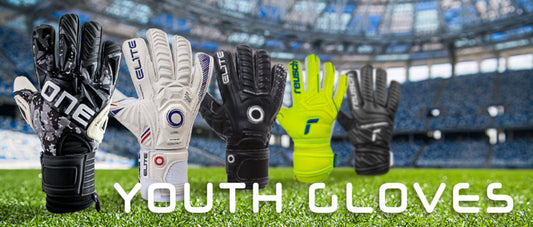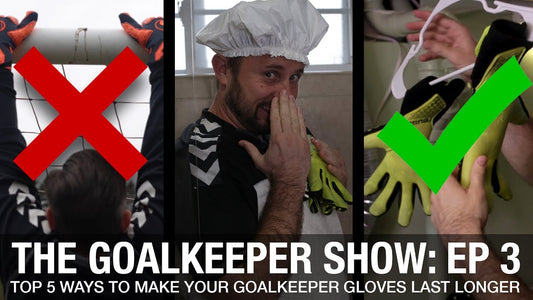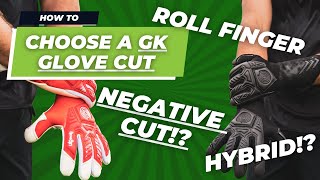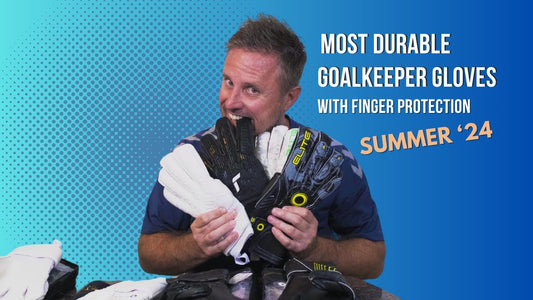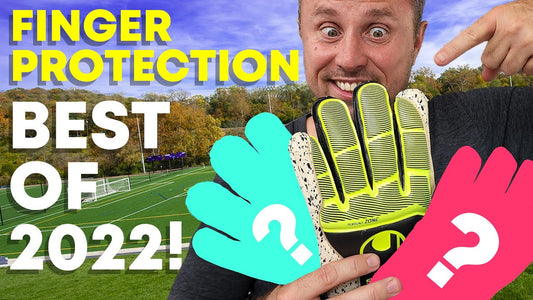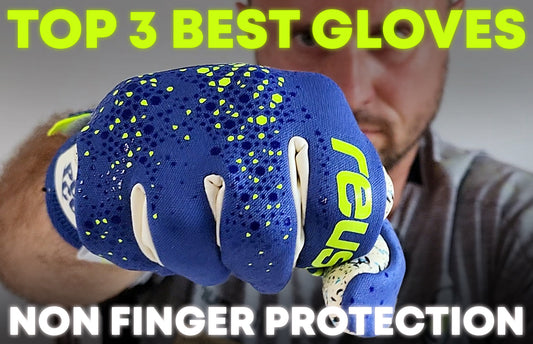There are so many different types of soccer training equipment online these days. It's tough to know what is good quality and actually works, so we have developed our testing methods to make sure you have a clear idea of what is best to buy. Check out the articles and videos on some of the best coaching sticks, ladders, cones, balls, rebounders and ball shooters in soccer.
Goalkeeper Equipment Insights
The Ultimate Guide for Parents to Youth Goalkeeper Gloves
Youth Goalkeeper Gloves: A Parent's Guide
As a parent, there’s nothing more fulfilling than watching your child pursue their passion on the field, especially when that passion is goalkeeping. Perhaps you’ve watched your child make incredible saves but also seen them struggle with gloves that don’t fit right or lack the grip needed for optimal performance. As they grow and develop as a goalkeeper, it becomes evident that the right equipment is more than just a luxury—it’s a necessity.
For young goalkeepers, the right youth goalkeeper gloves can make all the difference, impacting their performance, safety, and most importantly, their confidence. Properly fitted gloves protect their hands, enhance grip, and allow them to focus on making those crucial saves instead of worrying about discomfort. As a parent, understanding the importance of choosing the right pair of junior goalkeeper gloves is key to supporting your child’s growth in the sport.
In this guide, we’ll walk you through the essentials of selecting the best soccer goalie glove for your young goalkeeper. From understanding glove sizes to choosing the right type based on their playing style, this guide covers all the key aspects to help you make an informed decision.
Choosing the Right Size and Fit
For young goalkeepers, proper sizing is critical, as growing hands can quickly outgrow a pair of gloves. Choosing the right youth goalkeeper gloves that fit snugly yet comfortably is essential to ensure that your child has the best possible grip and performance. Gloves that are too tight may cause discomfort or limit movement, while gloves that are too loose can reduce control and expose the goalkeeper to injury.
Regular measurements are key—especially for young goalkeepers, whose hands can grow quickly. It’s important to measure your child’s hands frequently to ensure their gloves still fit properly. This can help avoid the disappointment of a child struggling with gloves that no longer provide the support or comfort they need.
To accurately measure your child’s hands for junior goalkeeper gloves, start by measuring from the tip of the middle finger to the base of the palm. This will give you the hand length, which will be the foundation for choosing the right glove size. You should also measure the circumference of the widest part of the palm, excluding the thumb. By combining these two measurements, you can get an accurate sense of the glove size.
When choosing soccer goalie gloves for youth players, it’s essential to keep in mind that sizing can vary slightly between manufacturers. The size of a youth goalkeeper glove may differ between brands, so it’s helpful to refer to specific size charts provided by each manufacturer. For example, a youth size 7 from one brand might fit differently from a youth size 7 from another brand. To avoid confusion, consult a trusted source for guidance on which brands best suit your child’s measurements.
Common Glove Sizes for Youth Goalkeepers:
JR Size 4 or 5: Small keeper, age 7 to 9 years old, height 4'6" to 4'8"
JR Size 6 or 7: Medium to larger youth keeper, age 10 to 12 years old, height 4'10" to 5'0"
Size 7 (Adult): Small adult or large youth keeper, height 5'2" to 5'4"
Be sure to measure both of your child’s hands and choose the larger size for the best fit. Keep in mind that as your child’s hands continue to grow, they may need new gloves more frequently.
Key Features to Consider
When choosing youth goalkeeper gloves, there are several key features to consider to ensure your child has the right equipment for training, matches, and long-term development. It's essential to find a balance between durability, protection, comfort, and affordability to get the most out of their gloves while keeping your budget in check.
Durability
Youth goalkeepers often face rigorous training sessions and tough matches, so durability is an important factor when selecting junior goalkeeper gloves. Gloves made with high-quality latex and reinforced stitching will be able to handle the constant wear and tear associated with intense play. However, it's essential to know that latex gloves, while providing superior grip and performance, wear out faster, especially on artificial turf. For younger players who need gloves that last longer, you may want to consider gloves made with a more durable synthetic material that will offer a longer lifespan, but at the cost of a slightly reduced grip.
Protection
Injury prevention is always a priority for young players. Finger protection and wrist support are crucial features to look for in soccer goalie gloves. Some gloves come with a spine or support system built into the fingers to prevent hyperextension or finger injuries during a game. Additionally, wrist straps and adjustable closures help secure the gloves in place, offering added stability. Protection ensures your child is safe while making those diving saves or handling the ball in tricky situations.
Comfort
Comfort is a top priority when it comes to youth goalkeeper gloves. If the gloves don't feel comfortable, your child may become distracted or have difficulty playing at their best. Look for gloves that provide a snug, yet flexible fit that supports the natural movements of the hands and fingers. Materials like neoprene or mesh allow for breathability and help keep hands cool and dry during long matches. Padding or cushioning in the palms and fingers can also enhance comfort without sacrificing performance, allowing your child to focus on their game.
Affordability
The right soccer goalie gloves should also fit your budget. While professional goalkeeper gloves often come with premium features, there are plenty of options that balance quality and cost for younger players. Youth goalkeeper gloves come in a wide range of price points, so consider your child’s level of play and how often they use the gloves. For beginners or casual players, more affordable gloves may offer sufficient durability and performance. However, if your child is playing at a competitive level, investing in higher-quality gloves could make a noticeable difference in their confidence and performance.
Top Brands for Youth Goalkeeper Gloves
Elite Sport
Known for their high-performance gloves, Elite Sport offers an excellent selection of gloves designed for youth players. Their gloves are made from high-quality latex, providing superior grip and comfort. They offer different models tailored to varying weather conditions and playing surfaces. For younger players, Elite's junior gloves combine durability and performance, with a focus on keeping the hands comfortable during intense training or matches.
Reusch
Reusch is a renowned brand in the world of goalkeeper gloves, and their youth goalkeeper gloves live up to the brand's reputation. Their gloves are designed for a range of skill levels, from beginners to advanced players. The Reusch Fit Control and Reusch Pulse lines are particularly popular among younger keepers, offering a good balance of protection, grip, and flexibility. The brand's emphasis on finger protection and wrist support makes them an excellent choice for growing hands.
Storelli
Storelli focuses on providing gloves that offer a combination of durability, comfort, and advanced technology. Known for their protection features, Storelli gloves are great for players who need that extra support, especially around the fingers and wrists. Storelli's gloves are perfect for goalkeepers who need to balance comfort with durability and often play on artificial turf or in various weather conditions.
Suitable Glove Types for Different Age Groups and Skill Levels
Beginners (Ages 6-9)For younger, beginner players, a training glove or all-weather glove is ideal. These gloves are designed for durability and comfort over performance, making them perfect for kids who are still learning the game. Brands like Reusch offer gloves with synthetic latex that can withstand the rough play of youth training sessions without sacrificing too much grip. These gloves tend to be a bit thicker and more durable, so they last longer through the learning stages.
Intermediate Players (Ages 10-12)As players advance, they will start focusing more on performance, so a matching glove or hybrid glove becomes ideal. These gloves are a mix of performance and durability, with latex that offers a great grip for catching the ball. Elite Sport provides excellent models for this group, as their gloves are specifically engineered for players who want to feel more connected to the ball. At this level, protection features, such as finger protection or wrist straps, can help ensure safety while still providing top-tier performance.
Advanced Players (Ages 13 and Up)For older, more experienced players, professional goalkeeper gloves (or near-professional-level gloves) offer the best combination of grip, comfort, and protection. Reusch and Storelli offer gloves with advanced latex materials that deliver excellent performance, even under extreme weather conditions. These gloves are often designed with a more snug fit and features such as negative cuts or roll finger cut for a more responsive feel. At this level, performance is key, but injury prevention through features like fingertip protection and padded palms is essential for young keepers looking to excel.
Maintaining Youth Goalkeeper Gloves
Proper maintenance of youth goalkeeper gloves is essential to ensure they last longer and maintain their performance throughout the season. Here are some simplified instructions and tips for keeping your child’s gloves in top shape:
1. Cleaning the Gloves
Wash after every use: After training or a match, it’s important to clean the gloves to remove dirt, sweat, and bacteria. This will prevent the latex from deteriorating and help maintain the grip.
Hand washing: Use a mild, low-foaming soap like a specialized glove wash (e.g., Reusch Re:Invigorate Glove Wash). Simply fill a sink or basin with lukewarm water, apply a small amount of soap, and gently scrub the gloves with your fingers. Avoid using harsh soaps like dish detergent, as they can dry out the gloves.
Rinse thoroughly: After washing, rinse the gloves until all soap is removed. Squeeze out excess water gently—never wring the gloves, as this could damage the stitching.
2. Drying the Gloves
Air dry: Always air dry the gloves by hanging them in a well-ventilated area, away from direct sunlight or heat sources (such as radiators). Direct heat can dry out the latex, causing it to crack or lose its grip.
Avoid machine drying: Never use a dryer, as this can severely damage the gloves’ latex and stitching. It’s important that gloves dry slowly to maintain their structure and flexibility.
3. Storing the Gloves
Store them separately: When the gloves are not in use, avoid storing them with the palms together. This can cause them to stick, leading to potential damage when you try to separate them. Instead, store them in a glove bag or place them in a well-ventilated space.
Don’t store them wet: Never leave wet gloves in a bag for long periods of time. If you can’t wash and dry the gloves immediately, wipe them down with a moist towel or cloth to remove excess dirt and sweat. This will help keep them fresh for the next game.
Use a glove bag: A glove bag is a great way to store gloves, keeping them safe and allowing the latex to breathe.
4. Additional Tips
Avoid dirt build-up: After playing, wipe the palms of the gloves with a damp towel to remove any dirt and debris. This helps prevent the latex from wearing down too quickly.
Keep gloves clean: Regular maintenance of gloves can prevent odors and bacteria from building up, ensuring they remain in good condition.
Frequently Asked Questions
How often should I replace my child's gloves?Youth goalkeeper gloves experience wear and tear quickly, especially with regular training and games. Typically, gloves should be replaced every 6-12 months, depending on how frequently they are used. If your child uses their gloves multiple times a week, you may need to replace them more often. Keep an eye on the condition of the gloves, especially the grip and latex, to determine when it’s time for a new pair.
What are the signs that my child needs new gloves?There are several signs that your child’s gloves may need replacing:
Loss of grip: If the gloves no longer provide the same level of grip, especially in wet conditions, it’s time for a new pair.
Tears or holes: If the latex is torn or there are holes in the gloves, they are no longer offering the protection needed.
Worn-out latex: Over time, the latex will wear down, causing the gloves to become less effective. If the palms feel smooth or have significant wear, it’s time for a replacement.
Discomfort: If your child complains that the gloves no longer fit comfortably or feel too loose or tight, a new pair may be necessary.
Are there any specific features I should look for in youth goalkeeper gloves?When choosing youth goalkeeper gloves, consider the following features:
Grip: Look for gloves with good grip, especially for younger players still developing their handling skills. Latex palms provide the best grip, but they wear out faster than synthetic options.
Protection: For younger goalkeepers prone to finger injuries, consider gloves with extra finger protection or a spine system to reduce the risk of hyperextension.
Fit: Make sure the gloves fit snugly but comfortably, without being too tight or too loose.
Durability: Consider a pair of gloves that can withstand the wear of regular practice sessions. Synthetic latex offers more durability, while professional-grade latex provides better grip but wears out faster.
Budget: There are various options available for different budgets. For practice sessions, more affordable gloves might suffice, while for games, consider gloves that offer better performance and grip.
Final Thoughts: Helping Your Young Goalkeeper Succeed
As a parent, choosing the right youth goalkeeper gloves is essential to your child's development and enjoyment of the game. Proper glove sizing, durability, and comfort will not only boost their confidence but also help prevent injuries and improve their performance. By considering factors like grip, protection, and fit, you can ensure your child has the best tools to succeed in the goal.
Don’t forget that regularly replacing gloves, maintaining them properly, and choosing the right features for your child’s playing style can make a huge difference in their experience on the field.
Explore Keeperstop’s wide selection of junior goalkeeper gloves today to find the perfect fit for your young athlete. With our expert advice and top-quality gloves, your child will be well-equipped for success in the game!
How to Care for Your Goalkeeper Gloves So They Last Longer
Goalkeeper Glove Maintenance: Tips and Tricks
Every goalkeeper knows the feeling: you’ve just snagged a game-winning save, but your gloves are showing signs of wear. It’s frustrating to see professional goalkeeper gloves lose their grip after a few uses, especially when you’ve invested in a quality pair. But what if you could extend the lifespan of your gloves for soccer with just a bit of care?
Proper glove maintenance isn’t just about keeping them looking good—it’s about ensuring peak performance and durability. In this guide, we’ll cover some essential tips and tricks to help you preserve your gloves, so you can keep your grip strong and your confidence high, game after game. From cleaning and drying to storage and conditioning, we’ll show you how to get the most out of your gloves for soccer.
Cleaning Your Goalkeeper Gloves
Proper cleaning is essential for extending the lifespan of your gloves, maintaining their grip, and keeping them fresh. During training and games, goalkeeper gloves collect dirt, sweat, and bacteria. The abrasiveness of dirt erodes the soft latex from the outside, while sweat and bacteria deteriorate the gloves from the inside out. This combination can also lead to unpleasant odors, which makes cleaning all the more important.
Cleaning Methods
Hand washing is the safest and most effective way to clean your gloves. Use a mild, low-foaming soap that’s free of dyes, phosphates, and harsh chemicals. Dish soap, shampoo, and most hand soaps are too harsh and can damage the latex. A glove-specific wash, like Reusch Re:Invigorate Glove Wash, is an excellent choice for removing dirt, sweat, and bacteria without compromising the latex. Gently scrub the gloves with your fingers to ensure you clean all areas, paying attention to the palm and fingers where dirt and sweat accumulate.
Rinsing and Drying
After cleaning, rinse the gloves thoroughly, squeezing out the water multiple times until there are no more soap suds. Leftover soap can dry out the gloves, so make sure to rinse well. Avoid wringing the gloves, as this can damage the stitching. If you prefer, you can use a washing machine without a rotating arm to rinse and spin out excess water.
Once clean, hang the gloves to dry in a safe spot, away from direct sunlight or heat sources. Never use a dryer or attempt to speed up the drying process, as this can damage the latex. Properly washed and rinsed gloves need at least 24 hours to dry completely before they’re ready for use again.
Pre-Wash and Maintenance Tips
Many manufacturers recommend a pre-wash for goalkeeper gloves to remove any chemicals and activate the latex properties before first use. Dampening all-weather foams before use also helps with grip and durability. Just remember, whatever you put into your gloves, you should take them out—always rinse thoroughly after dampening them.
For gloves that are heavily stained, smelly, or have been in the rain, cleaning is always a good practice. Aim to wash your gloves once a week based on how often you use them. Clean gloves perform better and last longer—plus, goalkeepers with fresh gloves tend to have more friends!
Proper Glove Storage
After a game or training session, it's tempting to toss your gloves into a bag and forget about them, but this can be detrimental in the long run. Dirt and sweat left to dry inside the gloves will erode the latex over time, causing them to crack and lose their grip. If you have another game the following day, instead of washing the gloves again—which could leave them too wet—wipe the palms with a moist towel to remove dirt. Wrapping your gloves in a moist towel keeps them hydrated for the next match without over-soaking them.
Storage Techniques
Never store your gloves with the palms together, as they can stick and tear when you try to separate them. A glove bag is the best option for storage, as it allows the gloves to breathe and prevents the latex from sticking or becoming misshapen. Ideally, store your gloves in a cool, dry place away from direct sunlight and heat sources, which can damage the latex and shorten their lifespan.
If your gloves are wet, don't leave them in this condition for too long. Storing wet gloves for more than a day can lead to unpleasant odors and mold growth. Ensure they dry properly, either by air drying or using a towel to wick away excess moisture.
Goalkeepers who rely on their gloves for performance—whether professionals or weekend warriors—must treat them with care. While top-level players often have the luxury of switching gloves after just one or two matches, most of us need to make our gloves last. Proper storage is an easy but essential step in extending the life of your goalkeeper gloves.
Addressing Common Issues
Goalkeeper gloves are designed to withstand intense play, but they aren't invincible. From mildew to wear and tear, several issues can arise over time. Luckily, many of these problems can be prevented or fixed with a bit of care and attention.
Mildew: Prevention and Treatment
Mildew is a common problem when gloves are stored improperly or left wet for too long. The combination of moisture, dirt, and sweat creates the perfect breeding ground for bacteria and mildew. To prevent this, always ensure your gloves are dried thoroughly after every use. Don’t leave them in a wet bag or in an enclosed space where air can’t circulate. If mildew does develop, gently scrub the affected area with a mild soap or specialized glove cleaner, then rinse thoroughly. Avoid harsh chemicals or detergents, as these can damage the latex. After cleaning, let your gloves dry naturally in a well-ventilated area.
Tears and Punctures: Minor Fixes
Even the most durable professional goalkeeper gloves can get small tears or punctures. While these can’t always be fully avoided, addressing them quickly can prevent further damage. For minor tears, you can use latex repair glue or a special glove adhesive to seal the cut. Apply the glue carefully and let it cure for the recommended time. When punctures happen, try to avoid pressing too hard on that area during play, as this could cause the damage to spread. If the tear is large or the glove is losing its structure, it might be time to retire the pair.
Loss of Grip: Causes and Solutions
A goalkeeper's grip is essential for catching, controlling, and distributing the ball. Over time, gloves can lose their grip due to dirt buildup, wear, or exposure to harsh weather. The primary cause of reduced grip is dirt and debris, which can coat the latex and impair its effectiveness. To restore grip, start by cleaning your gloves thoroughly using a mild soap or specialized glove wash. Rinse them well and let them air dry. Once dry, lightly dampen the palms with water or a grip-enhancing spray to activate the latex. Some goalkeepers even lightly spit on their gloves (a technique older players swear by) to boost grip, though this can be a less sanitary option. If your gloves are still losing their grip despite cleaning, it might be time to replace them, as latex naturally deteriorates with use.
Recommended Products
To keep your gloves for soccer performing at their best, it's essential to use the right products for cleaning and maintenance. At Keeperstop, we offer a range of items that are designed to extend the life of your goalkeeper gloves and maintain their grip.
Reusch Re:Invigorate Glove Wash
This specialized glove wash is perfect for keeping your professional goalkeeper gloves in top condition. It’s formulated to remove dirt, sweat, and bacteria without damaging the delicate latex. Using Re:Invigorate Glove Wash will not only help preserve your gloves’ grip but also keep them smelling fresh, ensuring your gloves are ready for the next match. Regular use will also prevent the build-up of grime and reduce the chances of mildew, keeping your gloves performing at their best.
Glove Glu
For extra grip and durability, Glove Glu is an excellent option. This product enhances the latex grip on goalkeeper gloves, even in challenging conditions. Applying Glove Glu helps restore the latex’s natural stickiness, making it easier to catch and control the ball. It’s ideal for rainy days or wet conditions where your gloves might lose their usual grip. Just apply a small amount to the palms of your gloves for a noticeable improvement in performance.
Glove Bag
Protect your gloves between games with a glove bag. This bag allows your gloves to breathe while preventing them from getting crushed or damaged when stored. It’s a simple but effective way to protect your gloves from dirt and external elements, ensuring they last longer and maintain their shape.
Frequently Asked Questions
Can I use a washing machine to clean my gloves?
While it may be tempting to throw your gloves in the washing machine, it’s generally not recommended. The machine's agitation can damage the delicate latex, leading to tears or loss of grip. Instead, hand wash your gloves with a mild soap to ensure the gloves maintain their shape and integrity. For a deeper clean, you can soak your gloves in a bowl of water with glove wash, but avoid using a washing machine.
What should I do if my gloves get wet?
If your gloves get wet during a game or practice, the first thing to do is gently rinse them with clean water to remove any dirt. After rinsing, you can either air dry them or use a moist towel to keep them damp if you plan on using them soon. Never wring your gloves or dry them with direct heat, as this can damage the latex. For proper care, ensure your gloves are completely dry before storing them for long periods.
How can I tell if my gloves need to be replaced?
Goalkeeper gloves don't last forever, and you’ll start to notice when it's time for a new pair. Look out for the following signs:
Loss of grip: If your gloves aren’t gripping the ball as they used to, the latex might have worn down.
Tears and punctures: Small tears or rips that can’t be repaired could indicate it’s time for a new pair.
Excessive wear: If the latex has completely worn away from the palms, or if the gloves feel less comfortable due to broken stitching, it's a clear sign that they need replacing.
Keep Your Gloves in Top Shape
Proper goalkeeper glove maintenance is essential for preserving performance, comfort, and longevity. By regularly cleaning your gloves with mild soap, storing them correctly, and addressing common issues like mildew or minor tears, you can extend the life of your gloves and ensure that they continue to perform at their best. Always remember to handle your gloves with care, and they will reward you with superior grip and durability.
Goalkeeper Glove Cuts: Choosing the Right Fit
Goalkeeper Glove Cuts: Choosing the Right Fit
Ever struggle with a soccer glove that just doesn’t feel right, whether it’s too tight, too loose, or lacks the grip you need when diving for a save? Many goalkeepers overlook how crucial the right cut is, but it can influence everything from comfort to ball control, affecting your play at every level.
The right cut ensures your goalkeeper gloves fit perfectly, allowing you to move freely while providing the necessary grip and protection. It’s not just about the size—though sizing is important—it’s about how the glove feels as you move on the field. This guide will break down the main glove cuts, helping you understand how each one impacts comfort, fit, and performance. By the end, you’ll know which one works best for your hands and playing style.
Types of Goalkeeper Glove Cuts
Understanding the various types of cuts is key to choosing the right pair of goalie gloves for your needs. Each cut affects how the glove fits on your hand, providing unique benefits depending on your style and preference.
Negative CutThe negative cut is known for its tight, glove-like fit. The seams are stitched on the inside, creating a second-skin feel. This cut contours closely to the fingers and palm, giving goalkeepers a snug, responsive fit that’s perfect for controlling the ball.
Pros:
Extremely snug and form-fitting for a more direct feel of the ball.
Great for goalkeepers who want enhanced control, especially when making quick, precise movements.
Offers a closer fit, reducing the chance of excess material bunching up.
Cons:
Can feel restrictive for goalkeepers who prefer more room or flexibility.
May not be comfortable for players with wider hands or fingers.
Ideal Players:
Best suited for experienced goalkeepers who value precision and responsiveness.
Goalkeepers with narrow hands or those who prefer a tight-fitting glove for ultimate control.
Roll Finger CutThe roll finger cut is characterized by its seamless, rounded design. The glove’s seams are rolled around the fingers, which provides a more padded, cushioned feel. This cut offers a snug fit without the tightness of a negative cut, and it increases surface area for better grip.
Pros:
Comfortable and cushioned, with a smooth, seamless feel around the fingers.
Provides a larger grip area, making it ideal for goalkeepers who want extra control when handling the ball.
Good fit for players who need a balance of comfort and performance.
Cons:
Might feel bulkier or less responsive compared to a negative cut.
Can be slightly looser for goalkeepers who prefer a more glove-like fit.
Ideal Players:
Ideal for goalkeepers who value comfort and a larger grip surface.
Great for players with average to wide hands who still want a secure fit without sacrificing flexibility.
Flat Palm Cut
The flat palm cut is one of the most traditional glove designs. It features a single piece of latex material stitched together at the sides of the glove, creating a flat palm surface. This cut provides a more relaxed fit with room inside the glove for movement.
Pros:
Roomy and comfortable, with a looser fit around the fingers and palm.
Provides flexibility and freedom of movement, making it a good choice for goalkeepers who prefer comfort over tightness.
Ideal for training and practice, as the glove is easy to wear and doesn’t restrict movement.
Cons:
The looser fit can result in less ball control and a less secure grip, especially in wet conditions.
Not as form-fitting as other cuts, which may be an issue for goalkeepers seeking a more responsive feel.
Ideal Players:
Best for goalkeepers who have wider hands or prefer a more relaxed fit.
Ideal for beginner to intermediate players who need comfort over precise ball control.
Hybrid Cut
As the name suggests, hybrid gloves combine elements from multiple cuts to provide a balanced fit. For example, a hybrid glove might feature a negative cut on the fingers for a snug fit, while using roll finger or flat palm designs for the backhand or wrist. This versatile option offers a combination of benefits, including comfort, grip, and responsiveness.
Pros:
Versatile design that balances comfort, responsiveness, and grip.
Great for goalkeepers who want the benefits of more than one cut in one glove.
Ideal for those who want a custom feel but aren’t sure which cut to choose.
Cons:
May not provide the same level of consistency in fit as a single-cut glove.
Can be a bit more expensive due to the mixed design.
Ideal Players:
Ideal for goalkeepers who want a glove that combines the best features of different cuts.
Suitable for players who are experimenting with different glove types and want a versatile, all-around glove.
Other Cuts
While the four cuts mentioned above are the most common, there are some less traditional designs, such as the flat negative and gunn cut, which combine various elements for specific needs. These are less widely available but can be tailored to the unique requirements of certain goalkeepers.
Understanding Cut and Fit Relationship
The relationship between glove cut and fit is fundamental to achieving optimal performance on the field. The cut directly influences how the glove fits around your hand, which in turn affects comfort, control, and your ability to make critical saves.
Cut and Fit: The Snugness Factor
The cut of a soccer glove dictates how closely it hugs your fingers and palm. A snug fit, such as that provided by a negative cut, offers a second-skin feel. This fit provides enhanced tactile feedback, giving goalkeepers greater sensitivity and control over the ball. If you're a goalkeeper who prefers precision and tightness, a negative cut will give you that close fit, minimizing excess material that could slow you down. On the other hand, a roll finger cut or flat palm cut may feel looser, offering more space for flexibility but less direct connection with the ball. These cuts are ideal if you prioritize comfort and freedom of movement over a snug, responsive fit.
Impact on Ball Control and Shot-Stopping
Your ability to control the ball and make quick, decisive saves is influenced by how well your gloves fit. A negative cut fits tightly around your fingers, offering an exceptional grip and a direct connection with the ball. This tight fit makes it easier to catch and control fast-moving shots and is especially beneficial when handling high-pressure situations. For goalkeepers who want precision and agility, the negative cut enhances your control, particularly when dealing with quick ball movements.
In contrast, a roll finger cut provides a bit more cushioning and surface area for grip, which can be useful when catching or parrying hard shots. While you might lose some of the “second-skin” feel that a negative cut offers, the added surface area makes it easier to secure the ball, especially in wet conditions.
A flat palm cut, being the loosest of the bunch, offers the most flexibility and comfort but provides the least ball control and grip. If you are playing in more casual or training environments, the flat palm glove offers ample room and comfort for extended wear, though it won’t offer the same level of precision for high-stakes shot-stopping situations.
Hand Shape and Fit Considerations
Not all hands are created equal, and finding the right glove cut for your hand shape is essential. Negative cuts tend to work best for goalkeepers with narrower hands. The tight, snug fit around the fingers is ideal for smaller or thinner hands that don’t need extra room to move. However, for goalkeepers with wider hands or larger fingers, a roll finger or hybrid cut might provide a better fit. The roll finger cut’s more padded structure helps offer comfort and grip without feeling too tight, while the hybrid cut can accommodate different hand shapes with a balance of fit and flexibility.
If you have long fingers or a more slender hand shape, you might find a negative cut particularly advantageous, as it allows for a tighter, more responsive fit that improves control. On the other hand, if you have a broader palm or need a bit more room, you might lean towards a roll finger cut or flat palm design, which gives you the space you need to feel comfortable while still maintaining a secure fit.
The right glove cut not only affects how your gloves feel but also how you perform when making crucial saves. A proper fit ensures that your gloves won’t interfere with your natural movement and that you’ll have the grip and control needed to stop even the most challenging shots. Understanding your hand shape and how each cut affects the fit and feel of the gloves can make all the difference in improving your performance on the field.
Factors to Consider When Choosing a Cut
Choosing the right goalkeeper glove cut isn’t just about fit—it’s about matching the glove to your playing style, personal preferences, and the weather conditions you’ll face on the field.
Playing Style: Aggressive vs. Controlled Play
Your playing style is one of the most important factors in deciding which glove cut is right for you. If you’re an aggressive goalkeeper who’s constantly diving, blocking, and pushing your limits, a negative cut might be the best fit. The tight, responsive fit offers excellent control, giving you a close connection with the ball. This is particularly helpful when you need to react quickly to fast shots or make precise saves. The negative cut’s snugness around the fingers allows you to grip the ball tightly and react instantly, which is essential for goalkeepers who like to command the box and make quick, aggressive movements.
On the other hand, if your style is more controlled and composed—maybe you prefer to position yourself carefully and make calm, calculated saves—a roll finger cut or flat palm cut may suit you better. The roll finger design provides more surface area for catching and handling the ball, making it ideal for goalkeepers who prioritize grip and cushioning over agility. Similarly, the flat palm cut offers ample flexibility and comfort, giving you the freedom to focus on positioning and controlled reactions, without the immediate need for the ultra-tight fit that the negative cut offers.
Personal Preferences: Comfort vs. Control
When it comes to goalkeeper gloves, fit and comfort are highly subjective. One goalkeeper might prefer the tight, second-skin feel of a negative cut, while another might opt for the extra room and flexibility of a flat palm or roll finger cut. There’s no one-size-fits-all solution, and what works for one player may not work for another.
Some goalkeepers prioritize comfort above all else, and if that’s you, a flat palm cut or roll finger cut might be your go-to. These cuts offer more room for your hands to move freely, allowing you to wear your gloves for longer periods without feeling restricted. Others might prefer the snug, glove-like feel of a negative cut, which offers a more tactile experience when handling the ball, enhancing ball control and shot-stopping ability.
It’s important to try different cuts and see which feels the best on your hands. After all, goalkeeping is a physically demanding position, and comfort plays a major role in helping you perform at your best. The best cut is the one that lets you move freely while offering the control and support you need for every save.
Weather Conditions: Wet vs. Dry
Weather conditions can significantly impact the performance of your gloves, and different cuts may perform better depending on the environment. If you play in wet conditions, the roll finger cut might be your best option. The increased surface area and snugness provide a better grip, helping you maintain control in slippery conditions. A roll finger glove’s cushioning also absorbs water better than some other cuts, keeping your hands comfortable even in the rain.
In dry conditions, a negative cut might be more beneficial, as the tighter fit gives you a more responsive feel and improves control in situations where ball handling is key. The close-fitting design reduces excess material that could get in the way, ensuring that your gloves are always in contact with the ball when making saves or handling shots.
However, regardless of the cut, it’s essential to keep in mind that wet weather can affect the grip of any glove. It’s always a good idea to look for gloves that feature latex with moisture-resistant properties or gloves designed specifically for wet weather. The right glove cut combined with the proper latex material will ensure that your gloves perform at their best no matter the conditions.
How Glove Cut Affects Sizing
Different cuts can cause variations in the overall fit of your goalkeeper gloves, and this may affect the size you need. For example, negative cuts tend to run smaller than other cuts. This is because negative cuts are designed to fit tightly around the fingers and palm, giving you a snug, close-to-skin fit. Because of this, you may find that you need to go up one size from your usual glove size when choosing a negative cut.
On the flip side, roll finger and flat palm cuts typically offer a bit more room and can feel looser. These cuts provide more space in the palm and fingers, which might mean you could stick to your usual glove size or even go down a size for a better fit. The extra room in these cuts is great for goalkeepers who prefer a little more flexibility and comfort but may not offer the tight grip needed for maximum ball control.
Hybrid cuts, which combine elements of multiple cuts, can vary in sizing depending on the specific combination of features. They usually offer a balance between the snugness of a negative cut and the flexibility of a roll finger or flat palm cut. You might find that hybrid gloves tend to run more true to size or slightly larger than negative-cut gloves.
Measuring Your Hands for Different Cuts
To find the perfect size for any glove cut, it’s important to measure your hands accurately and also to keep in mind how different cuts will fit. Here’s how you can measure your hands for different cuts:
Measure Hand Length:
Measure from the tip of your middle finger to the bottom of your palm (where your wrist starts).
For negative cuts, if your hand length measures 7.5 inches, you’ll likely need to size up to a size 9 glove (to account for the tight, close-fitting nature of this cut).
For roll finger or flat palm cuts, the same hand measurement might only require a size 8, as these cuts are generally roomier.
Measure Hand Circumference:
Wrap a tape measure around the widest part of your palm, just below the knuckles (excluding the thumb).
If your hand circumference falls between two sizes, always opt for the larger size when choosing a negative cut—this ensures you have enough room to comfortably wear the gloves while maintaining flexibility.
For roll finger and flat palm cuts, you may feel comfortable with the exact size based on your hand circumference measurement since these cuts tend to offer more room.
Adjust for Comfort and Fit:
For negative cuts, remember that the fit should be tight and snug, with your fingers comfortably filling the glove without being overly cramped.
For roll-finger and flat palm cuts, the gloves should fit securely without too much excess room around the fingers. You want your fingers to fill the glove but without feeling restricted.
Frequently Asked Questions
What is the best glove cut for beginners?
For beginners, a roll finger cut or flat palm cut is often the best option. These cuts provide a more comfortable fit and offer a bit more room around the fingers and palms, which makes them easier to wear. The extra room can be particularly helpful for those who are still adjusting to the feeling of wearing gloves. Additionally, these cuts tend to be less restrictive, which is ideal for goalkeepers who are just starting to develop their skills.
While a negative cut offers great control and responsiveness, it may be too tight for beginners, especially if you're not yet accustomed to a snug fit. It's better to start with a cut that offers comfort and flexibility, and then, as your skills and preferences develop, you can experiment with more specialized cuts for a better fit and enhanced performance.
How does the cut affect the glove's durability?
The durability of a goalkeeper glove can be influenced by its cut, but it also depends heavily on the latex material used and how often the gloves are worn. In general, negative-cut gloves tend to wear down quicker than other cuts because of their snug, tight fit. The extra tension around the fingers can cause the latex to stretch and break down more quickly, especially with frequent use.
On the other hand, roll finger and flat palm cuts typically offer more flexibility and less stress on the latex, which can extend the life of the gloves. These cuts are often favored for training sessions or practice gloves, as they tend to last longer with less wear and tear. However, it's important to remember that glove durability will always depend on the type of latex (training latex vs. match latex) and the intensity of use.
Final Thoughts: Finding Your Perfect Glove Cut
Choosing the right goalkeeper glove cut can significantly impact your comfort, control, and overall performance. By understanding the different glove cuts, you can make an informed decision that aligns with your playing style and preferences. The best glove cut is one that fits your hands well, provides the desired level of comfort, and enhances your ball control.
At Keeperstop.com, we offer a wide range of gloves in various cuts, ensuring that you find the perfect fit. Whether you're looking for flexibility, a snug fit, or maximum control, our selection has something to suit every goalkeeper. Explore our collection today and let us help you choose the gloves that best support your game!
The Ultimate Guide to Sizing Soccer Goalie Gloves Properly
Picture this: It’s game day, and a young goalkeeper is struggling to grip the ball securely. Their gloves feel clumsy and unresponsive, fingers slipping inside the fabric with every save attempt. Frustration mounts, confidence dwindles, and performance suffers—all because the gloves don’t fit properly.
Finding the right glove size isn’t just about comfort—it’s a critical factor in maximizing control, ensuring safety, and building confidence on the field. Ill-fitting gloves can lead to mishandling, distractions, and even injuries, especially to the fingers and hands.
This guide will walk you through the essential steps to determine the perfect fit for goalkeeper gloves, helping you or your player perform at their best. We’ll cover measuring techniques, key sizing considerations, and practical tips to ensure a secure, confident fit every time. Let’s get started.
Measuring Your Hands
Measuring your hands is the first step in finding soccer goalie gloves that fit like they were made for you. Here’s a detailed guide to ensure accuracy:
Measuring Hand Length
Hand length is typically the most reliable method for determining your glove size. Follow these steps:
What you need: A ruler or measuring tape.
How to measure: Place your hand flat, palm up. Measure from the tip of your middle finger to the bottom of your palm (where it meets the wrist).
Rounding and sizing: Round your measurement up to the nearest half-inch. Add 1 to this number to determine your glove size.
For example, if your hand measures 7.5 inches, round to 8 and add 1. Your glove size is a 9.
Measuring Hand Circumference
Hand circumference is another useful measurement, especially if your hands are wider.
What you need: A soft measuring tape.
How to measure: Wrap the tape around the widest part of your palm, just below your knuckles, excluding your thumb.
Rounding and sizing: Round this measurement to the nearest whole inch and add 1 to find your glove size.
Measure Both Hands
Not all hands are created equal—your dominant hand is often slightly larger. Measure both hands and use the larger measurement for sizing. This ensures the soccer goalie gloves fit comfortably without feeling tight or restrictive.
General Fit Guidelines
Goalkeeper gloves should be slightly larger than your hands. Aim for about ¼ to ½ inch of space between your fingertips and the glove’s tips. A glove that’s too tight may restrict movement, while excessive space can make the gloves feel sloppy.
Special Considerations for Youth Gloves
Sizing youth gloves can be tricky, as different brands and models vary widely. What’s more, with youth goalie glove sizing, you can not round up and add an inch. The junior goalkeeper's glove would be way too big. True youth goalkeeper gloves will be smaller and more narrow through the wrist closure and backhand. Below are some general basic youth goalkeeper glove sizing guidelines.
Youth Size 4–5: Small youth (ages 7–9, height 4’6”– 4’8”).
Size 6–7: Medium youth to small female goalkeeper (ages 10–12, height 4’10”– 5’0”).
Adult size 7: Large youth/small adult (height 5’2”– 5’4”). Hand measurement of 6.75 to 7 inches or less.
True Youth Gloves
Reusch Attrakt Freegel Gold Finger Support Junior
Elite Sport Warrior
Uhlsport Absolutgrip HN Pro Jr
Full-Size Range with Smaller Sizes
These size youth 4 5 and 6 will fit bigger than “Junior” specific glove options:
Elite Sport Squid: This Elite Sport goalkeeper glove has a full-size run from size 5 through adult size 11. This will be bigger than a youth or junior glove in Adidas, Reusch, or Uhlsport.
The One Glove OG1 Type-R: The Type R has a sizing range from a smaller youth or female size 6 through the adult sizing of 7 8 9 10 and 11. The Type R is a more narrow-fitting glove but would be longer than a true junior-size 6.
Practical Tip
If you can’t try on gloves in-store, always measure carefully and use Keeperstop’s resources—like sizing videos and expert support—to make informed decisions. Proper sizing is critical to your performance and comfort on the field.
Understanding Size Charts
Why Brand-Specific Charts Matter
Goalkeeper glove sizes aren’t universal—each brand has its own sizing system, and the fit can vary significantly between manufacturers. For instance, a size 7 from Reusch might feel snug, while the same size from Uhlsport could have more room. Using the specific size chart for the brand you’re purchasing is essential to ensure accuracy.
How to Interpret Size Charts
Most size charts list glove sizes alongside hand measurements, typically in inches or centimeters. Here’s how to decode them:
Hand Length: Some charts use hand length as the primary reference. Compare your measurement (middle fingertip to wrist base) with the chart to find your size.
Hand Circumference: Other charts focus on hand circumference (measured around the widest part of your palm). Locate your measurement in the chart to identify your size.
Youth vs. Adult Sizes: Be aware of distinctions between youth and adult sizing. Youth sizes often start smaller and may have unique cuts for smaller hands.
Fit Type: Some brands include details about the fit—tight, regular, or looser cuts—which can help you decide if you’re between sizes.
Examples from Popular Brands
Here’s an example of a quick comparison of size chart differences:
Elite Sport: Known for its versatility in cuts and materials, the Elite Sport Revolution II is a tighter streamlined fit that may be more appropriate for taller slender goalkeepers or keepers who like a tighter fit, while the Elite Sport Supreme is a negative cut that would fit a wider range of goalkeepers. The backhand and entry system on the Supreme, Squid, or Black Solo are not as narrow as the Revolution 2.
One Glove: With a modern, more minimalist approach, this may be the tightest of goalkeeper glove brands that Keeperstop.com stocks in the USA. The One Glove OG1 Midnight is a tighter second-skin feel with no extra room. It was definitely designed for thinner or taller advanced male and female goalkeepers. There is no extra room in the One Glove Midnight or Type R by design.
Practical Tip
If you’re between sizes, consider the intended use. For training, a slightly looser fit may be acceptable, while game gloves should fit more snugly to optimize control and performance.
What Does the Perfect Fit Feel Like?
A properly fitted goalkeeper glove should feel snug but not restrictive. The fingers should have about ¼ to ½ inch of space at the tips, allowing for natural movement and optimal grip. The glove should contour to your hand, providing a secure feel without excess material bunching or sagging.
You should be able to make a fist easily without straining against the fabric, and the wrist closure should hold firmly without pinching or cutting into your skin. If the gloves feel uncomfortable during basic movements, they aren’t the right size.
Common Fitting Problems
Gloves Too Tight:
Issue: The gloves pinch, limit movement, or make your hands feel fatigued. This also decreases the durability of your goalkeeper gloves making your gloves wear out quicker at the fingertips.
Solution: Size up or look for a different brand or cut with a looser fit, such as a flat cut.
Gloves Too Loose:
Issue: Your fingers and hand slide around inside the glove, making it hard to control the ball. Goalkeeper gloves that are too big are also less durable as they wear inconsistently in the wrong places such as the middle of the finger body.
Solution: Size down or choose a cut like a negative cut, which provides a closer fit.
Issue: Gloves with finger protection feel restrictive or bulky.
Solution: Adjust the sizing or opt for a different style of finger protection with more flexibility.
Finger Protection Issues:
Troubleshooting Tips
If between sizes: Always go for the larger size. Slightly bigger gloves are more forgiving than tight ones, and adjustments can be made with glove tape or additional wrist straps.
Test grip: If you can’t grip the ball securely, the fit is likely wrong.
Reassess after break-in: Some gloves feel stiff initially but mold to your hand over time. Wear them during light training sessions to see if the fit improves.
Glove Types and Sizing
Choosing the right glove type is as much about sizing as it is about personal preference and play style. Each glove cut has unique characteristics that affect fit, so understanding these differences is essential for selecting the right size.
Negative Cut
Fit Characteristics: Negative-cut gloves have inward-stitched seams, creating a snug fit that hugs the fingers. This design reduces excess material for a more direct ball feel.
Sizing Tips: Stick to your exact measured size for a tight, responsive fit. If you prefer a bit of extra room, consider sizing up.
Best For: Goalkeepers who prioritize precision and control, often used by players with narrower hands.
Roll Finger
Fit Characteristics: Roll finger gloves feature seams rolled around the fingers, resulting in a more padded and cushioned feel. This design gives additional coverage and a secure fit.
Sizing Tips: These gloves are more forgiving in size, so you may not need to size up unless your hand is on the upper end of a measurement.
Best For: Keepers who want a more comfortable fit and enhanced grip surface.
Flat Palm
Fit Characteristics: Flat palm gloves have a traditional cut with a flat, single-piece palm design. They provide a looser fit and more room inside the glove.
Sizing Tips: If you prefer a tighter fit, consider sizing down. Otherwise, stick to your measured size for a relaxed feel.
Best For: Goalkeepers with wider hands or those who prioritize flexibility and comfort over a snug fit.
Hybrid Cut
Fit Characteristics: Hybrid gloves combine elements of two or more cuts—such as roll finger and negative cut—to balance fit, comfort, and control. The specific combination determines how the glove feels.
Sizing Tips: Depending on the hybrid’s design, sizing might lean toward either the tighter fit of negative cuts or the roomier feel of roll-finger or flat palm styles. Check brand-specific recommendations for guidance.
Best For: Players who want a balance of features, often experimenting to find their perfect fit.
Practical Tip
When selecting a glove type, consider how it aligns with your playing style and hand shape. Keeperstop.com offers expert advice and product reviews to help you make an informed decision. Accurate measurements and understanding of glove cuts will ensure your gloves feel like an extension of your hands.
Frequently Asked Questions About Sizing Soccer Goalie Gloves
What if my measurements fall between two sizes?
When your hand measurements land between two sizes, it’s usually better to size up. A slightly larger goalkeeping glove offers more comfort and flexibility, while a smaller glove may feel restrictive and lead to quicker wear. Remember, goalkeeping gloves should have about ¼ to ½ inch of space at the fingertips.
How do I account for growth in youth gloves?
Youth goalkeepers often grow quickly, making sizing a challenge. To accommodate growth:
Choose a size with a bit of extra room (up to ½ inch at the fingertips).
Look for gloves with adjustable wrist straps to ensure a secure fit as the hand grows.
Consider consulting Keeperstop.com for guidance on youth-specific gloves, as some brands run smaller or larger.
What should I do if my gloves feel too tight or too loose after a few uses?
Too Tight: Gloves might feel tighter initially but can stretch slightly with use. If they remain uncomfortable, try stretching them gently by wearing them during light training or opting for a different size or cut in the future.
Too Loose: If the gloves feel sloppy, you can improve the fit by using glove tape or choosing gloves with a tighter wrist closure system. However, excessively loose gloves might indicate the need for a smaller size.
How often should I measure my hands?
For youth players, measuring every season is advisable due to rapid growth. Adults may only need to measure once or twice a year unless switching brands or styles. Consistently checking ensures you get the right size, especially if you’re exploring gloves from a new manufacturer with different sizing standards.
Finding Your Perfect Fit
Selecting the right goalkeeper glove size is critical to ensuring peak performance. By accurately measuring your hands, understanding the nuances of glove cuts and sizing charts, and addressing common fitting issues, you can find gloves that feel like a natural extension of your hands. Whether you’re a youth player, a seasoned goalkeeper, or a parent shopping for your child, taking the time to get the fit right is an investment in your game.
Not sure where to start? Keeperstop.com is here to help. Explore our expert sizing tools, detailed guides, and a curated selection of gloves from top brands. For personalized advice, reach out to our knowledgeable team—we’re passionate about helping goalkeepers at every level succeed.
Best Durable GK Gloves with Finger Spines for 2024
Goalkeeper gloves designed for turf play with finger protection are built to withstand the unique demands of artificial surfaces, where the ground can be rougher than natural grass. These gloves combine durability with safety features to help goalkeepers perform at their best while protecting their hands from injury. Here's an overview of what to look for in these specialized gloves and some top recommendations:
Key Features of Turf Goalkeeper Gloves with Finger Protection
Durability on Turf: Turf surfaces are rougher on gloves than grass, and goalkeepers often experience more abrasion and wear when diving or making saves. To address this, turf-specific gloves are often made with reinforced latex or hybrid latex foam to offer better longevity. These gloves usually have a hard-wearing outer layer that resists damage and abrasions without sacrificing grip.
Finger Protection (Spines): Finger protection technology has become an essential feature for goalkeepers, especially those playing on hard surfaces like turf. Most finger protection systems use spines or exoskeletons—rigid supports embedded in the glove’s design to prevent excessive bending and hyperextension of the fingers. This reduces the risk of sprains, jams, and fractures, especially during high-impact saves.
Some systems are removable, allowing goalkeepers to choose whether they want to use the protection. Others are integrated and fixed into the glove’s construction. These systems usually work by limiting the range of motion of the fingers, but they don’t interfere with normal hand movement for catching, throwing, or handling the ball.
Grip and Latex: Turf can wear down latex quicker than natural grass, so gloves made for artificial surfaces often feature a hybrid latex or composite latex. This type of latex blends the grip of traditional latex with durability features that make it more suitable for the abrasive nature of turf. The grip is crucial for providing control when catching or distributing the ball, and these gloves usually have good traction, even on dry turf.
Cut and Fit: Goalkeeper gloves come in various cuts, such as flat cut, roll finger, negative cut, or hybrid cut, which affect the glove's fit and flexibility. Turf gloves with finger protection tend to have a tight fit to allow for the maximum range of motion in the fingers while still providing adequate protection.
Padding and Cushioning: For added protection, especially on turf surfaces, many gloves with finger protection also include additional padded areas around the palm or backhand. This helps protect the hands from impact during falls or when punching the ball, particularly on hard, artificial pitches.The best options to consider would be the Elite Sport Squid, Elite Sport Vibora and the Reusch Infinity range of gloves. Click on the links to discover more about these awesome turf gloves.
Best Durable Goalkeeper Gloves of 2024 without Finger Spines
When selecting the best turf goalkeeper gloves of 2024 without finger protection, the main focus tends to be on grip, comfort, durability, and performance in various weather conditions. While many keepers prefer gloves with finger protection to reduce the risk of injury, many elite-level goalkeepers and amateurs alike still choose traditional gloves without protection for a more natural feel and freedom of movement. Below are some of the top goalkeeper gloves of 2024 (without finger protection), catering to different needs and preferences.Here we focus on the needs of durability whilst playing on turf latex. 2 of the best options for such an environment are:
T1tan Black Beast 3.0
The T1tan Black Beast 3.0 gloves are a high-performance piece of equipment designed primarily for use on turf soccer fields, with an emphasis on durability, comfort, and functionality. In the video below, Christian goes over their best features and what sets them apart in the market.
Reusch Infinity Range
The Reusch Infinity goalkeeper gloves are a part of Reusch’s high-performance lineup, designed with a focus on providing superior grip, comfort, and durability. For 2024, these gloves continue to evolve with technology and materials that cater to both elite professionals and serious amateur players. In the video below we break down the key features of the Reusch Infinity gloves and discuss why they are favored by many goalkeepers.
How To Select A Goalkeeper Glove Online
How To Buy Goalkeeper Gloves
When selecting a goalkeeper gloves your two top considerations should be budget and whether the goalkeeper needs finger protection?. Next consider how the GK glove will be used such as games vs practice. Lastly The glove cut or fit preference is based on physical characteristics such as height, weight, hand size, and length. Turf is more abrasive and harsh on GK gloves as well as the body.
Finger Protection or Spineless:
Goalkeeper gloves with finger protection are very popular for many developing keepers. They offer support and protection. Goalie gloves with fingersaves increase cost and change the catching experience. Using soccer goalie gloves with finger protection is a personal choice. There are also varying levels of flexibility in finger spines. If you prefer a more robust protection, you should consider Ortho-Tec Spines from Reusch. If you prefer a more flexible spine you should consider options from West Coast Goalkeeping. Brands such as One Glove, Elite Sport, etc... use standard segmented plastic spines that offer medium of both protection and flexibility. Brand such as T1tan and KPR offer excellent construction and premium materials in both finger protection and spineless gloves. You can discover all the goalkeeper glove options at Keeperstop.com by clicking HERE.
Budget:
When purchasing a goalkeeper glove it is best to set your expectations based on the family budget. More expensive gloves traditionally have better grip with superior materials and technology. More expensive gloves don’t last any longer or have more durability. GK gloves are perishable. There is no way around it. Cheap goalkeeper gloves may have more synthetic material, more durability, and less comfortable. Generally, the more expensive a glove, the softer and better the latex to provide the best possible grip. This counteracts durability. Some goalkeeper families mistake high cost for long lifespan in goalkeeper gloves, when it is actualky the opposite in most cases. However, there is a soccer goalie glove for every goalkeeper at every price point. Budget is one of the best place to start your glove search. Work within your family budget and read the product descriptions to ensure you spend your money wisely.
Playing Need:
Games vs practice is the first consideration. Game gloves will traditionally be more expensive as they have better grip, more technology, and comfort. Soft all weather game latex is tacky, offers cushioning, and makes catching shots easier. More durable practice gloves are less expensive in comparison. They may last longer in terms of number of saves and uses than game gloves. The increased life of the glove is due to more durable denser synthetic palm materials.
Other considerations are playing surfaces:
Turf vs Grass? Turf is more abrasive and harsh on GK gloves as well as the body. Grass fields will hold more moisture and as a result a softer all weather game glove may be more appropriate.
Climate? Do you play traditionally in dryer or more wet climate? Specialty gloves with wet weather game latex will increase the cost of the glove.
Glove Cut or Fit:
To build confidence and maintain control of a shot it is important to have the correct fit for your hand type. A goalkeeper with a more athletic build with wider hands may prefer a flat palm or roll finger. A goalkeeper with long fingers and a narrow palm may prefer a negative cut. Many goalkeeper gloves are offered in "Hybrid" cuts now to offer the best of both. This ensures a snug fit on the hand that is easier to get on and off no matter your hand size and shape. The glove should be comfortable on the hand because you'll be wearing it for 2+ hours at a time. Make sure the glove fits and feels right on the hand before using them. You can ensure you get the correct size by visiting our handy Sizing Guide section.
Picking a Glove Just Based On Color and Style:
Picking a goalkeeper glove based solely on color, style or matching your boots is a bad decision. Inevitably you will be disappointed. First and foremost is a goalkeeper glove with good grip or a soccer goalie glove with more durability for turf. The color and design should be one of the last considerations on your checklist as they are purely aesthetic and will not affect the way you or the glove performs.
The goalkeeper glove experts at Keeperstop.com in USA are happy to help select the GK glove that meets your playing and budgetary needs. We are happy to help. Call us at 860.904.7679 to speak with a goalkeeping expert or contact via email Paul@keeperstop.com
What is the best finger protection goalkeeper glove?
The best goalkeeper gloves with finger protection 2022 are the Reusch Attrakt Freegel Fusion Ortho-Tec Goaliator, Uhlsport Absolutgrip Flex Frame Carbon, One Glove Apex Pro Colossus. These were picked as the the best goalkeeper gloves with unidirectional spines based on the grip and durability; the support and flexibility of the finger protection; as well as the balance of quality and price. Do you need goalkeeper gloves with finger saves? That is up to you. There is no wrong answer.
Reusch Attrakt Freegel Fusion Ortho-Tec Goaliator
This is arguably the best goalkeeper glove with finger protection for 2022 for game use. The Reusch Ortho tech system is patented. The finger spines are available in the four fingers and the thumb. The glove spines can be removed through a flexible opening in the backhand to customize or replace after a hard shot. The new Reusch Ortho Tec system offers the most protection for the fingers while still offering flexibility. The R-Grip Fusion Foam latex is sprinkled with hard ground and soft ground foam for greater balance of grip and durability. The Evolution Negative Cut is rolled around the fingertips for a tight fit, best ball control and maximized contact area. An inner-seam construction in the lower finger area offers a tight, soft flexible and ergonomic fit. This cut works especially well with the Ortho-Tec finger spine system, eliminating any wasted space in the fingers and backhand. Reusch Attrakt Freegel Fusion Ortho-Tec Goaliator may be the most expensive glove on our list but it is truly one of the best soccer goalie gloves with finger support in terms of on field performance sales, and feedback from advanced goalkeepers.
Uhlsport Absolutgrip Flex Frame Carbon
The Uhlsport Supergrip+ Flex Frame Carbon Goalkeeper Glove is one of the best finger protection game gloves on the market. The new Flex Frame finger protection system offers more protection than the previous Bionik spine system, whilst maintaining the same level of flexibility and comfort. The awesome Supergrip latex always provides superb grip in all weather conditions in soccer. Uhlsport, like Reusch, have a patent on their finger spine system so only they can offer it. The unique one piece system disperses force throughout the backhand, so the keeper does not feel the force of those particularly hard shot. This system is more flexible than most and is intended to mimic the ligaments and tendons of the hand. Natural support when you need it!
One Glove Apex Pro Colossus
The One Glove Apex Pro Colossus is brand new for 2022 and has some impressive tech. The new Impact 1.0 palm is the ideal balance between grip and durability for those keepers who play and train on turf soccer fields. The new punch zone and removable finger spines make this one of the best releases of 2022. The textured feel in the i1 latex ensures it has high abrasion resistance, which works well on both turf and indoor surfaces. When a latex offers high levels of durability, you usually have to accept that it will offer a lot less grip on the soccer ball. That is not the case here as One Glove have developed a latex that offers the best of both. The removable finger spines come as a standard segmented system that allows good flexion forward and solid support when the fingers are pushed back during a hard shot. This really is a quality package for any goalkeeper that plays or trains on turf soccer fields.
You can watch our YouTube review of the Top 3 Finger Protection Goalkeeper Gloves 2022 at the bottom of this page or by clicking this link >>> www.youtube.com/watch?v=EsnYidS7I6Q
If you have any questions on the gloves featured in this article, please give us a call to speak with Christian or Paul at 860.904.7679
What are the goalkeeper gloves with the best grip 2022?
The best goalkeeper gloves in the USA offering the best grip, comfort, and value are the:
Uhlsport Speed Contact Supergrip+ HN
Reusch Pure Contact Fusion
The One Glove Apex Pro Ignite.
Goalkeeper glove choice is very subjective based on many different factors including budget, game or practice use, and color. The top three results were chosen based on feedback from goalkeepers and parents as well as analysis by the goalkeeper glove experts at keeperstop.com.
The Uhlsport Speed Contact Supergrip+ HN was chosen because the Supergrip latex has the best balance of grip, durability, and cushioning at the game in all weather conditions. It features a new sleek design and color with the bold black and orange accents. The half negative cut creates a custom fit that is suitable for a wide range of male and female goalkeepers.
Reusch Pure Contact Fusion is one of the latest gems from the 2022 goalkeeper glove range. Also features a fusion latex for increase durability at the game level comparative to than soft all weather game gloves from competitors. The tight fit and comfort Reusch Pure Contact range makes it a fan favorite. Goalkeepers love the minimalist design and feel. There is a Reusch Pure Contact Fusion Junior with youth goalkeeper glove sizes as well.
One Glove Apex Pro Ignite is a new mid priced goalkeeper glove. Features a 4mm pro grade Contact Latex and is worn by professional goalkeepers in the English Premier League. The negative cut coupled with the speed sleeve entry system allows many goalkeepers to enjoy the fit and comfort. It is easy on and easy off. It is available in youth goalkeeper glove sizes 5 and 6 through adult sizes 7 to 11.
Thank you for reading our goalkeeper glove choices for games summer 2022. Please feel free to comment below or on the Keeperstop Youtube channel and video. If you have any questions regarding the review; the best goalkeeper gloves for games, or any soccer goalie glove sizing question please contact us.
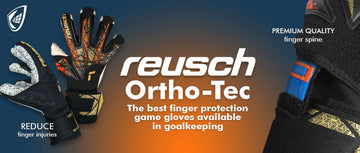
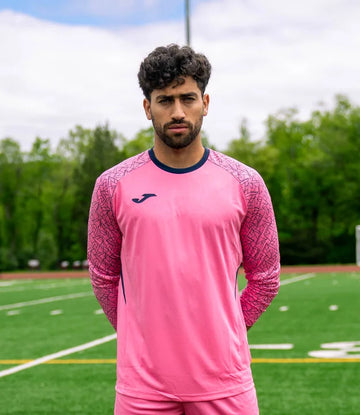
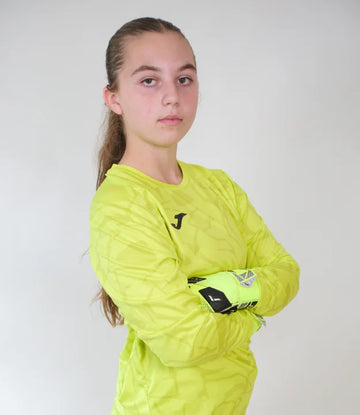
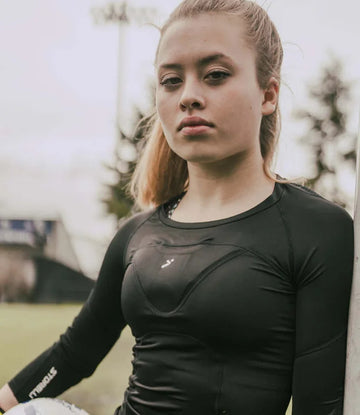
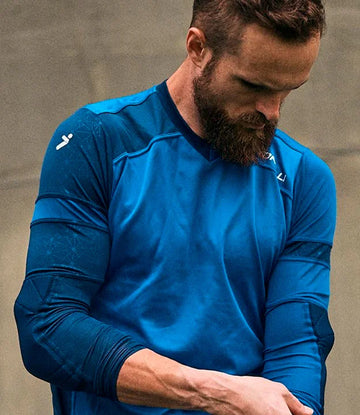
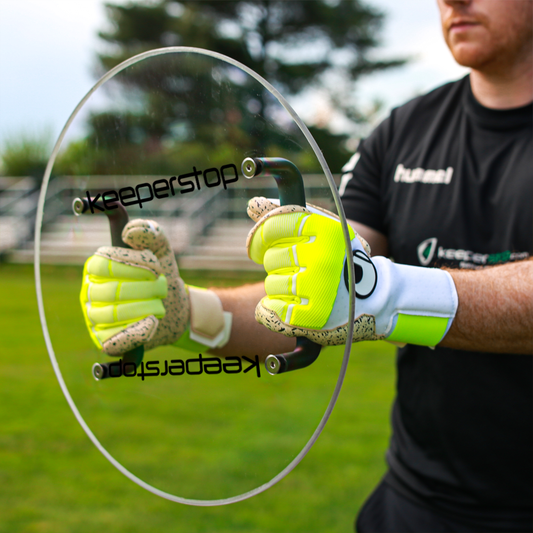
 Gloves
Gloves
 Jerseys
Jerseys
 Gear
Gear
 Brands
Brands
